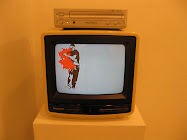Cy Twombly and Mark Rothko stand out as carrying the banner for America’s rightful place in art history through fifty years, from the development of Rothko’s mature style in 1949 through Twombly’s Lepanto winning Golden Lion at the Venice Biennale in 2001. The two artists express an obsession with literature, bridging back to European painting of the Enlightenment. Mythological scenes melt with contemporary relevance for Twombly. His experiments with painting broaden the atmosphere Rothko was operating in just a few years earlier, their aim and their sources are not dissimilar. Both men seem to be analytical about their intentions and their results, Rothko referencing Nietzsche’s early Birth of Tragedy, Twombly naval history. Flat painting with an atmospheric depth is a formal characteristic of both painters, and a depiction of light emanating from the painting’s surface. An internal light source was integral to Rothko painting in his prime, subtle in the dark and brooding scenes found at the Rothko Chapel. Especially in his late work Twombly softened his ground to include subtle color and depth; Untitled, 1994, in the last room of the Twombly Gallery of the Menil campus, is a great example. Earlier ‘Blackboard’ and ‘Monet’ pieces use depth in similar but more synthetic ways.


















0 comments:
Post a Comment